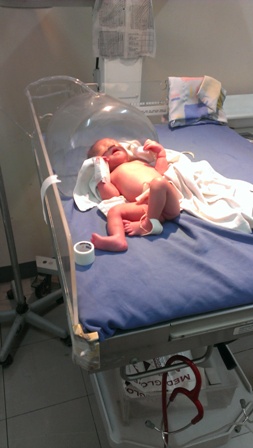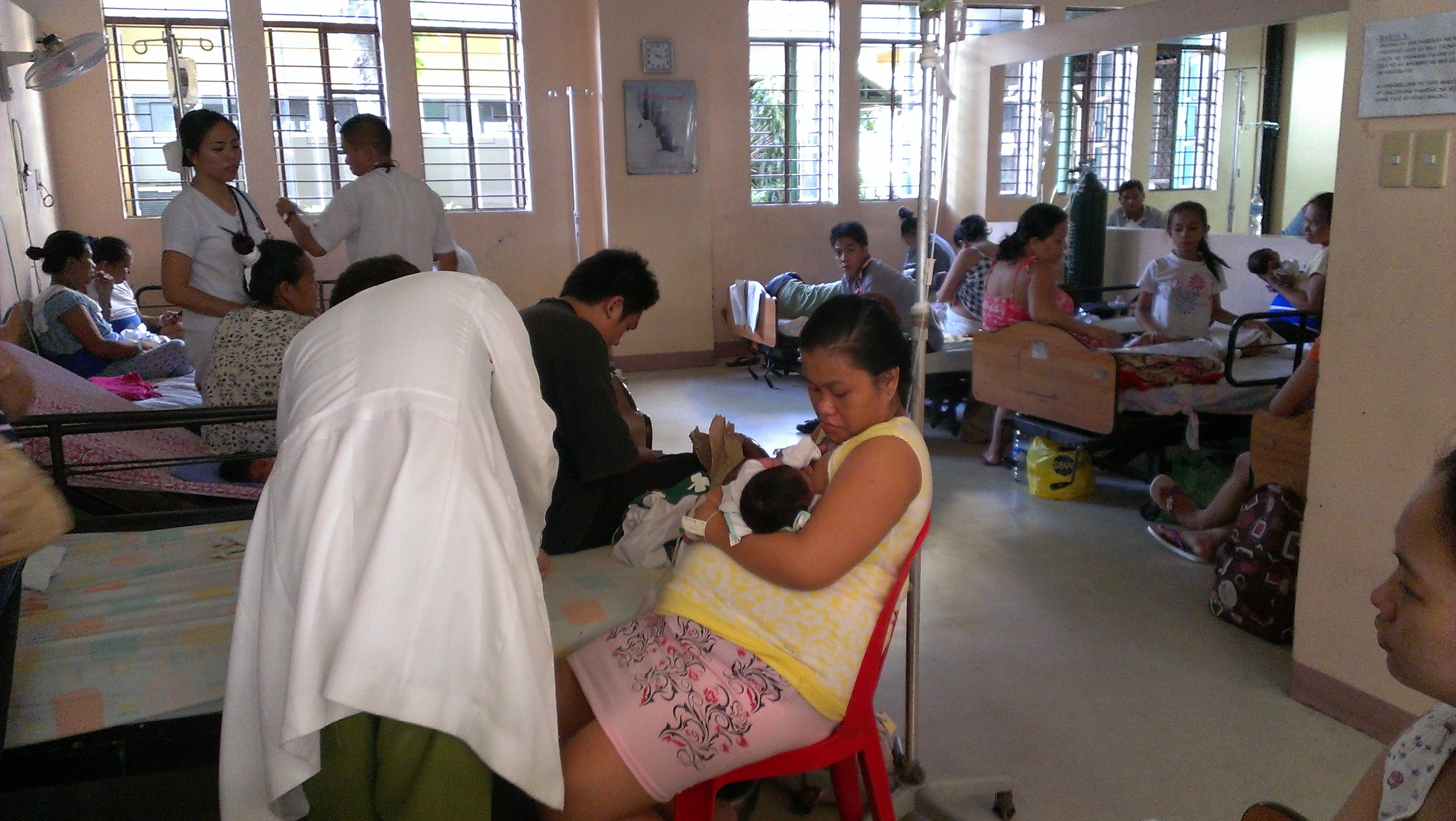Posted by Ricci Sylla, MD (a thrid year OBGYN resident from Kaiser Permanente, Santa Clara while…
Quirino Memorial Medical Center – Quezon City, Philippines 2nd Blog
Posted by Ricci Sylla, MD (a third year OBGYN resident from Kaiser Permanente, Santa Clara while on a global health elective in Quezon City, Philippines at Quirino Memorial Medical Center).
Some major differences in the way medicine is practiced in the Philippines is due to the laws. The Philippine population is over 85% Roman Catholic, and abortion is illegal. Therefore, misoprostol, a very cost-effective and inexpensive medicine to treat postpartum hemorrhage, is extremely restricted because of its possible use as an abortifacient. In addition, carboprost was pulled from use a few years ago so only oxytocin and methergine are available along with carbetocene which is not available in the United States. It is unfortunate because the maternal mortality rate in the Philippines is approximately 260 per 100,000 deliveries, mostly due to postpartum hemorrhage. The Philippine Secretary of Health set a goal to decrease the mortality rate by 75% by 2015. However, it is unlikely that they will meet this goal. A large part of the problem is due to geography. Nations such as Russia and Nepal were able to decrease their maternal mortality rate by 84%. However, for a developing island nation, transportation may require and available boat and good weather. One of the residents mentioned that her mother died of hemorrhage after her delivery as it took over two hours for her to get a plane ride to a hospital.
Currently, Quirino Memorial Medical Center (QMMC) where I am doing my rotation is one of several hospitals in the Metro Manila area who are providing training to nurses, midwives, and doctors from the outlying islands in order to decrease the maternal mortality rate. There is a group from Palawan that is currently here. Their training sessions include two days of didactics then nine days of observing and delivering patients.
Resident life continue to fascinate me. At Kaiser Permanente Santa Clara, we use Spectralink phones to get in touch with each other. At QMMC, residents use their cell phones to contact each other at all times. Also, there are four residents chosen to be the chief during their year, and they rotate as chief three months at a time. For those three months, the chief lives in the hospital. They are here day and night at all hours. The only time they leave is to go to church, and that is only if the day is not too busy. In order to see their family, their families can visit them in the hospital. For laundry, there is a laundry service near the hospital. It is a grueling time though as chief, they get the choice to do any case that comes through. The chiefs are also thankful that they only do their term three months at a time as only a few years ago, there was just one chief chosen for the whole year.
For Philippine medical students, they start their clinical rotations during the fourth year of medical school. QMMC has rotating students from four local medical schools. They do a lot of jobs that technicians or nurses do in the U.S. For example, the med students take vital signs, learn to draw blood, and insert foley catheters. They are then responsible for walking the samples to the Pathology Department so they can be processed. For stat labs, they are also responsible for returning to Pathology to get the results and reporting back to the residents. In addition, there is only one electronic fetal monitoring machine (EFM) for all the patients. So patients get rotated next to the machine for monitoring during their labor. For further monitoring in between the times they are on the EFM machine, med students and residents listen to fetal heart tones with a stethoscope as the single hand-held Doppler is used in the triage area. The EFM machine does not have a working tocometer, so often med students have to do “labor watch” which means sitting next to a patient and charting frequency, length, and strength of contractions in order to assess if a patient requires augmentation.

It is also interesting to note that in the U.S., I might quote treatment guidelines from the American Congress of Obstetrics and Gynecology. However, in the Philippines, guidelines from the World Health Organization are followed. Whereas fetal macrosomia would be 5000 grams in the U.S., 4000 grams would be enough to cause concern for possible shoulder dystocia. A great thing about the patient population here is that obesity rates are very low, and what the residents here might consider obese is quite mild to my eyes. I have also enjoyed the fact that at 5’ 3”, I tower over a lot of the patients and even a few of my fellow residents.
It has been impressive to watch the residents make diagnoses clinically rather than relying on tests which may or may not be available. I am not sure how well I can diagnose a breech presentation in a patient with an intact bag, though it is a daily occurrence here even in patients who are dilated only a centimeter. An interesting case came in the other night where a grand multiparous patient pregnant with her twelfth child came in completely dilated with an elbow sticking out in the vagina due to transverse presentation. She was taken straight to the operating room for a Cesarean section. Fortunately, her baby was a good weight and measured appropriately for a full term baby. This patient has had no menses over the past twelve or so years due to always being pregnant. Almost every pregnancy is dated by the last menstrual period which is often unreliable, so babies are diagnosed as either appropriate or small for gestational age.
The residents here are impressed that residents at Kaiser Permanente Northern California residency programs are given time to do international rotations. Though I miss little things such as disposable drapes, gowns, and booties, I have been thoroughly enjoying this amazing learning opportunity


This Post Has 0 Comments